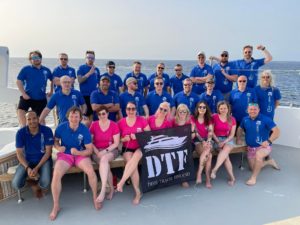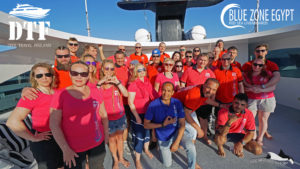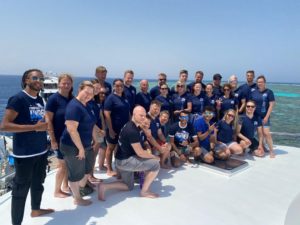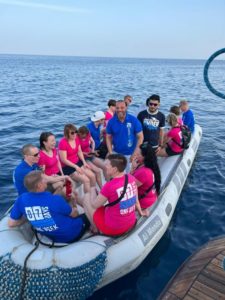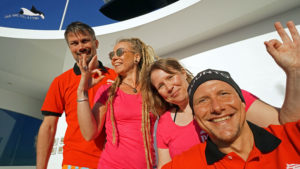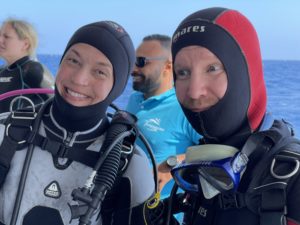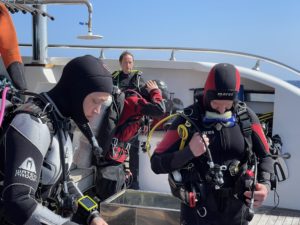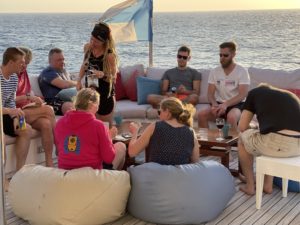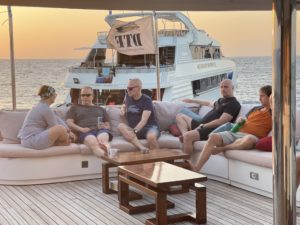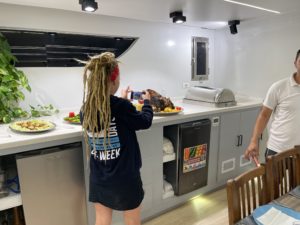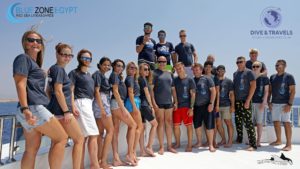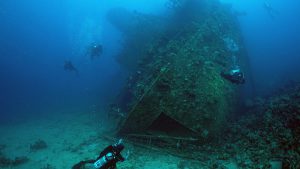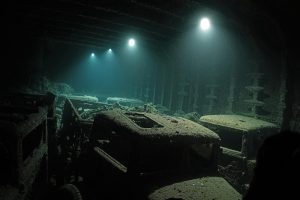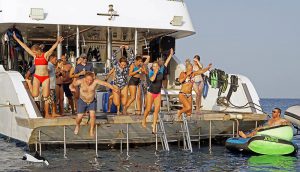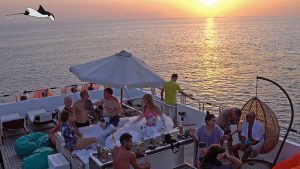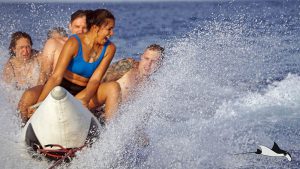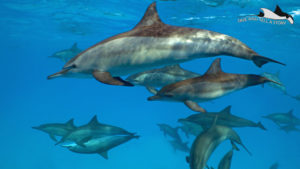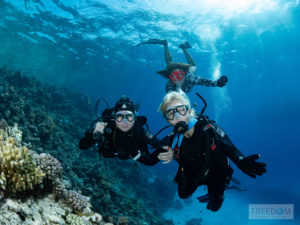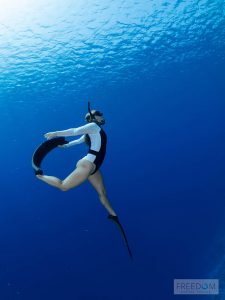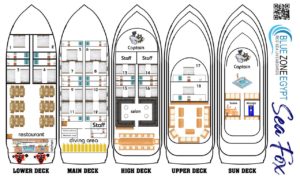Key Dive Sites
Throughout the trip, you’ll explore some of the Red Sea’s most iconic and diverse dive sites, each offering something special:
Ras Mohamed: A Diver’s Paradise
Ras Mohamed National Park, located at the southern tip of the Sinai Peninsula, is one of the Red Sea’s most celebrated dive sites. Renowned for its stunning biodiversity, dramatic underwater landscapes, and vibrant coral ecosystems, it offers a world-class experience for divers of all levels.
- Diverse Marine Life
- Home to pelagic species such as barracuda, trevally, and jacks, making it an exciting site for larger fish encounters.
- Coral gardens provide a habitat for smaller reef fish, creating a colorful and dynamic underwater ecosystem.
- Iconic Dive Sites
- Shark Reef: Known for its steep walls covered in vibrant coral and schools of large fish.
- Yolanda Reef: Famous for its sunken cargo, including bathroom fixtures, now encrusted with coral and teeming with life.
- Anemone Reef: A vibrant area filled with anemones and clownfish, offering a picturesque dive.
- Underwater Topography
- Features dramatic drop-offs, vertical walls, and intricate coral formations that make for a visually stunning dive.
- Accessibility
- Suitable for divers of various skill levels, with sites ranging from shallow coral gardens to deeper wall dives.
Ras Mohamed Mohamed offers :
- World-Class Biodiversity: Encounter a variety of species in a single dive.
- Dramatic Scenery: From coral-encrusted wreckage to vertical walls, the topography is awe-inspiring.
- Historical Significance: As Egypt’s first national park, Ras Mohamed highlights the importance of marine conservation.
Ras Mohamed is more than a dive site; it’s an underwater treasure trove that combines natural beauty, rich biodiversity, and thrilling encounters, making it a must-visit destination for any diving enthusiast.
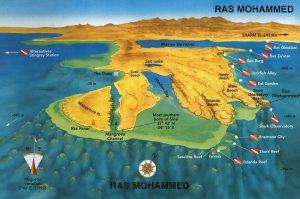
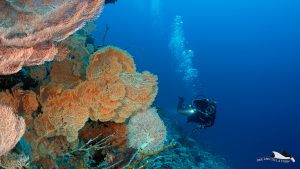
Thistlegorm Wreck: A Dive into History
The Thistlegorm, a British merchant ship sunk in 1941 during World War II, is often considered one of the world’s top wreck diving sites. Located in the Red Sea, it offers divers a unique blend of historical exploration and vibrant marine biodiversity.
- Historical Significance
- The wreck serves as an underwater time capsule, preserving wartime artifacts such as:
- Locomotives and tanks
- Rifles and ammunition
- Motorbikes and trucks
- These remnants provide a fascinating glimpse into World War II history.
- The wreck serves as an underwater time capsule, preserving wartime artifacts such as:
- Marine Biodiversity
- The wreck is teeming with marine life, serving as an artificial reef.
- Large schools of fish, including tuna and snappers, frequent the site, along with groupers, batfish, and sometimes even reef sharks.
- Wreck Structure
- The wreck is well-preserved, allowing divers to explore both the exterior and interior sections, including cargo holds filled with wartime supplies.
- The deck and superstructure are encrusted with vibrant corals, adding to the site’s allure.
- Diving Experience
- Depth ranges from 16 to 30 meters, making it accessible to advanced and technical divers.
- The combination of historical artifacts and thriving marine ecosystems offers an unparalleled diving experience.
Thistlegorm offers :
- Unique Historical Dive: Explore one of the most iconic shipwrecks from World War II.
- Rich Marine Life: Witness a thriving underwater ecosystem that has claimed the wreck as its home.
- Diving Challenge: Ideal for advanced divers seeking an immersive and rewarding experience.
The Thistlegorm wreck is a must-visit destination for history enthusiasts and avid divers alike, combining the thrill of underwater exploration with a poignant connection to the past.
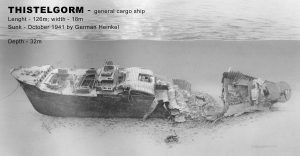

Rosalie Moller: A Wartime Wreck Dive
The Rosalie Moller, a British cargo ship, met her fate during World War II and now lies as a historical wreck in the Red Sea. Sunk on October 8, 1941, just days after the famous Thistlegorm, the ship has become a remarkable dive site for those interested in history and underwater exploration.
Historical Background
- The Rosalie Moller was tasked with transporting Best Welsh Coal to Alexandria, taking the long route around the southern tip of Africa to avoid enemy-controlled waters.
- On October 6, 1941, she anchored in the Gulf of Suez near Gobal and Quisum Islands, awaiting passage through the Suez Canal.
- Two days later, the German Henkel HE111 bomber that sank the Thistlegorm returned to target the Rosalie Moller. Two bombs hit her starboard side, causing severe damage to hold no. 3. The ship sank upright to the sandy seabed.
Dive Site Details
- Wreck Orientation
- The bow rests at a depth of 50 meters.
- The stern, rudder, and propeller sit at 45 meters.
- The deck lies at 35 meters, with much of the original equipment still intact.
- Preservation
- Most of the ship’s deck machinery, including winches and ventilators, remains in place.
- The masts and funnel have fallen and lie on one side, providing additional points of interest for divers.
- Marine Life
- Over the decades, the wreck has become a thriving artificial reef.
- The site attracts a variety of marine life, including large schools of fish, soft corals, and occasional sightings of larger pelagic species.
- Diving Conditions
- Depths range between 35 and 50 meters, making it suitable for advanced and technical divers.
- The deeper location and limited light create a dramatic atmosphere, emphasizing the ship’s historical significance.
Rosalie Moller offers :
- Historical Insight: The wreck tells a story of wartime bravery and tragedy.
- Rich Ecosystem: The combination of human history and marine life offers a unique dive experience.
- Preserved Features: The ship’s intact structure, from deck machinery to the iconic funnel, provides divers with a vivid connection to its past.
The Rosalie Moller is an underwater time capsule, offering a profound and unforgettable dive for those who venture to its depths.

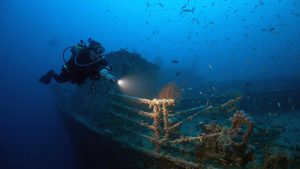
Straits of Tiran: A Diver’s Paradise
The Straits of Tiran, located at the entrance to the Gulf of Aqaba, are renowned for their strong currents and rich marine biodiversity. This iconic diving destination features four distinct reefs—Gordon Reef, Jackson Reef, Thomas Reef, and Woodhouse Reef—each offering unique underwater landscapes and thrilling experiences for advanced divers.
- Strong Currents
- The powerful currents sweeping through the straits create nutrient-rich waters, supporting vibrant coral ecosystems and attracting large pelagic species.
- Ideal for drift diving, offering an exhilarating underwater journey.
- The Four Reefs
- Gordon Reef: Known for its coral gardens and the wreck of the Loullia, a grounded freighter visible above the water.
- Jackson Reef: Features dramatic drop-offs and an abundance of soft corals. It’s a hotspot for shark sightings, especially hammerheads.
- Thomas Reef: Famous for its steep walls, colorful coral formations, and underwater canyons. A highlight for adventurous divers.
- Woodhouse Reef: Offers a long, narrow reef with strong currents and stunning coral cover, often visited by schools of large fish.
- Pelagic Encounters
- Large species, including tuna, barracuda, and reef sharks, are commonly seen patrolling the reefs.
- The straits are also a migratory route, increasing the chance of spotting rare marine life.
- Vibrant Coral Gardens
- The reefs are adorned with vibrant soft and hard corals, home to countless reef fish and smaller marine creatures.
- Excellent visibility enhances the breathtaking beauty of the underwater scenery.
Straits of Tiran offers:
- Adventurous Drift Dives: The strong currents provide a dynamic and exciting diving experience.
- Marine Diversity: Encounter pelagic species and explore ecosystems teeming with life.
- Unique Reefs: Each of the four reefs offers a distinct environment and features for divers to explore.
The Straits of Tiran combine natural beauty, thrilling currents, and a wealth of marine life, making it a must-visit destination for experienced divers seeking adventure and unforgettable underwater moments.




Abu Nuhas: The Reef of Shipwrecks
Abu Nuhas, located near the shipping lanes of the Suez Canal, is a renowned dive site famous for its collection of historic shipwrecks. These wrecks, transformed over time into thriving artificial reefs, provide a fascinating and eerie diving experience, blending history and marine beauty.
- The Wreck Collection Abu Nuhas is home to four iconic shipwrecks, each with its own story and unique diving appeal:
- Giannis D: A Greek cargo ship that sank in 1983. The wreck lies at an angle, with its intact stern being a highlight for exploration.
- Carnatic: A British steamship that sank in 1869. Its wooden framework is adorned with vibrant corals and offers a hauntingly beautiful dive.
- Marcus (Chrisoula K): Often referred to as “The Tile Wreck” due to its cargo of Italian floor tiles. Its structure is well-preserved and rich with marine life.
- Kimon M: Known as “The Lentil Wreck,” this ship’s scattered remains create a dramatic underwater scene.
- Marine Biodiversity
- Over the years, the wrecks have become artificial reefs, teeming with life.
- Divers can spot schools of snapper, batfish, and groupers, along with smaller creatures like nudibranchs and crabs hiding in the wreckage.
- Wreck Accessibility
- The wrecks rest at depths ranging from 15 to 30 meters, making them accessible to recreational divers with experience in wreck diving.
- The excellent visibility in the area enhances the exploration experience.
- Historical and Visual Appeal
- The wrecks offer a glimpse into maritime history and the destructive power of the reef.
- The contrast of twisted metal structures against the vibrant coral and marine life creates a hauntingly beautiful underwater landscape.
Abu Nuhas offers :
- Wreck Diversity: Explore multiple shipwrecks, each with its unique structure and history.
- Marine Life: Experience the transformation of wrecks into thriving marine habitats.
- Adventure and History: Dive into the stories of these ships and witness how the ocean reclaims its space.
Abu Nuhas is a must-visit destination for wreck enthusiasts and divers looking for a thrilling and historically rich underwater adventure.
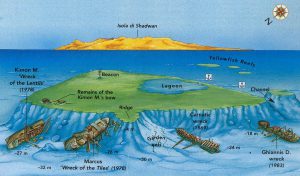
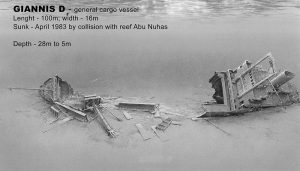
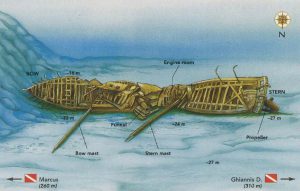
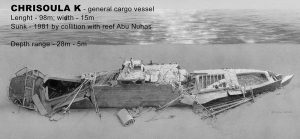
Dunraven: A Historic Wreck Dive
The Dunraven, a British steam and sail vessel, sank in 1876 near Ras Mohamed National Park and has since become one of the most popular wreck dive sites in the Red Sea. This historic shipwreck offers divers an incredible blend of maritime history and vibrant marine life.
- The Wreck
- The Dunraven lies upside down at depths ranging from 18 to 30 meters.
- Its structure is well-preserved, allowing divers to explore the outer hull, interior cargo holds, and remnants of its steam engine and propeller.
- Marine Life
- Over the years, the wreck has transformed into an artificial reef, supporting a diverse array of marine life.
- Divers can encounter:
- Schools of glassfish, sweepers, and batfish sheltering in and around the wreck.
- Larger species like groupers, barracudas, and sometimes turtles patrolling the area.
- Smaller creatures like nudibranchs, lionfish, and moray eels adding to the site’s biodiversity.
- Diving Experience
- The wreck’s manageable depth and structure make it accessible to divers of varying experience levels, though basic wreck-diving skills are recommended.
- The surrounding coral reefs further enhance the dive, offering a mix of soft and hard corals.
- Historical Significance
- As a 19th-century British merchant vessel, the Dunraven provides a glimpse into maritime history, adding a layer of intrigue to the dive.
Dunraven offers:
- Historical Appeal: Explore a shipwreck from the 1800s and imagine its storied past.
- Rich Marine Life: Witness the vibrant ecosystem that now calls the wreck home.
- Beginner-Friendly Wreck Dive: Ideal for those new to wreck diving or seeking a more relaxed experience.
The Dunraven combines history, marine biodiversity, and accessible diving conditions, making it a favorite site for divers visiting the Ras Mohamed area.
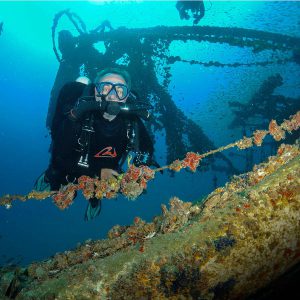

Dolphin House: A Marine Sanctuary
Dolphin House, one of the most renowned dive sites in the Red Sea, is celebrated for its frequent encounters with wild dolphins. This unique site combines stunning coral reefs, shallow depths, and diverse marine life, creating an unforgettable experience for divers and snorkelers alike.
- Dolphin Encounters
- The site is a natural habitat for pods of wild dolphins, providing an extraordinary opportunity to observe these intelligent and playful creatures in their natural environment.
- While dolphin sightings are common, their movements are not guaranteed, adding an element of excitement to each visit.
- Vibrant Coral Reefs
- The site boasts a mix of hard and soft corals, teeming with colorful reef fish and invertebrates.
- The reef structure includes shallow lagoons and coral gardens, making it perfect for exploration.
- Shallow Depths
- With depths ranging from 5 to 20 meters, Dolphin House is suitable for divers of all levels, including beginners and snorkelers.
- The calm and clear waters enhance visibility, allowing for a closer look at marine life.
- Diverse Marine Life
- Beyond dolphins, the area is home to various species, including angelfish, butterflyfish, moray eels, and rays.
- The reef’s health and biodiversity make it an underwater photographer’s dream.
Dolphin House offers :
- Dolphin Interactions: A rare chance to swim and snorkel alongside wild dolphins.
- Accessible for All Levels: Suitable for beginner divers, advanced divers, and snorkelers.
- Stunning Scenery: A combination of vibrant reefs and marine biodiversity creates a magical underwater experience.
Dolphin House offers a unique blend of adventure, relaxation, and natural beauty, making it a must-visit destination for marine enthusiasts.
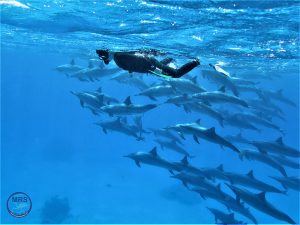
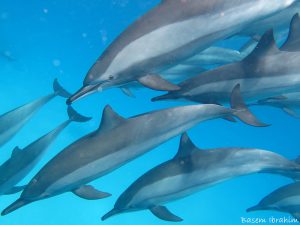
Prices
The Sea Fox liveaboard offers a premium diving experience with a range of cabin options to suit various preferences. You can choose from:
Lower deck cabins 1300 Euro / Person
Main deck cabins 1350 Euro / Person
High deck cabins 1450 Euro / person
Upper deck cabin 1600 Euro / person
Prices include
- Full Board accommodations (including all meals and snacks)
- Transfer from and to the airport
- Marine park fees
- Nitrox
- Diving guides and assistance
- 12 L tank and weights
- WI-FI
- Group T-shirt
Prices not include
- Flights tickets
- Staff and boat crew tips (approx. €100)
- National park fees and environmental fees € 50
- Rental equipment (available for an additional fee) Price list .pdf
- Personal travel and diving insurance (recommended). You can purchase diving insurance online from DAN Europe (valid for 1 year)
Payment schedule
- Booking fee 30%:
- The final payment is due 3 month before departure
Booking Information
To secure your place on this exclusive liveaboard diving trip, please contact Blue Zone Egypt at info@bluezoneegypt.com.
Spaces are limited, and early booking is highly recommended to guarantee your spot.
Dive Guides
“Our dive guide team combines experience, safety, and exceptional service to ensure an unforgettable underwater adventure. Leading the team is Ali Ahmed , a seasoned guide who has safely led tens of thousands of Scandinavian divers through breathtaking underwater landscapes. Alongside him is Mo Sultan, our Golden Dive Master, affectionately known as Bulbul among Finnish divers for his expertise, warmth, and ability to create a comfortable diving experience for all skill levels.”
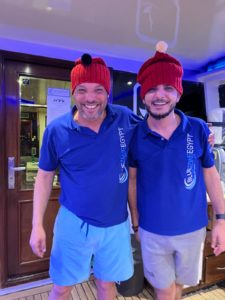
Brief shot of further previous trips
